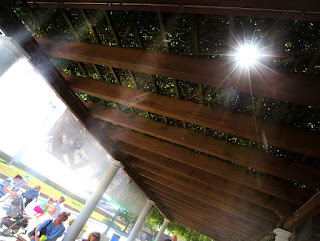The history of architecture
Engineering is the craftsmanship and study of planning and developing structures and other actual designs. It has been an indispensable piece of human progress for millennia, and its development over the long run mirrors the evolving needs, values, and innovative headways of various social orders. In this paper, we will take an excursion through the historical backdrop of engineering and investigate its development after some time. Ancient Engineering: The earliest type of design can be followed back to ancient times when people constructed straightforward designs utilizing normal materials like wood, stone, and dirt. These designs were utilized chiefly for haven and security from the components and hunters. Right now there can no understanding of inside planning administrations since all they center around to make areas of strength for an and building. Antiquated Engineering: As human progress grew, so did the intricacy and complexity of their structures. Old civilizations like Egypt, Greece, and Rome are known for their stupendous engineering, including pyramids, sanctuaries, and amphitheaters. These structures were frequently adorned with many-sided carvings and intricate points of interest, mirroring the qualities and convictions of the social orders that fabricated them.
Archaic Design: During the Medieval times, engineering turned out to be more centered around strict structures, for example, temples, church buildings, and palaces. Gothic design, portrayed by its sharp curves, ribbed vaults, and flying braces, arose during this period. This style of engineering was expected to convey a feeling of otherworldliness and stunningness, with tall, elaborate structures intended to rouse sensations of marvel and devotion. If you need a interior designing services.
Renaissance Engineering: The Renaissance time frame saw a re-visitation of traditional types of design, with a reestablished interest in Greek and Roman styles. Structures were planned with a more prominent accentuation on extent, evenness, and equilibrium, and beautified with intricate models and frescoes.
Elaborate and Extravagant Engineering: The Florid and Lavish periods were portrayed by a significantly more prominent accentuation on ornamentation and enrichment. Structures were intended to make a feeling of loftiness and show, with many-sided enumerating and striking structures. This style of engineering was leaned toward by the gentry and sovereignty of Europe, who utilized it to grandstand their riches and influence.
Present day Design: In the twentieth hundred years, engineering went through a sensational change, with an emphasis on usefulness, effortlessness, and effectiveness. Current modelers like Le Corbusier, Straightforward Lloyd Wright, and Ludwig Mies van der Rohe tried to make structures that were stylishly satisfying as well as commonsense and reasonable. This prompted the advancement of new materials and development methods, including cement, steel, and glass.
Postmodern Design: In the last 50% of the twentieth hundred years, engineering turned out to be more mixed and various, with a more noteworthy accentuation on individual articulation and imagination. Postmodern designers dismissed the possibility of a solitary, bound together style and on second thought drew motivation from a great many sources, including verifiable styles and mainstream society.
Contemporary Engineering: Today, design proceeds to advance and change, with draftsmen and fashioners exploring different avenues regarding new materials, structures, and innovations. Contemporary structures are frequently intended to be earth practical, zeroing in on energy effectiveness and diminishing fossil fuel byproducts. All in all, design has gone through a captivating and shifted development after some time, reflecting various social orders' evolving needs, values, and mechanical headways. From ancient cabins to present day high rises, every period has transformed the assembled climate, molding the world we live in today.




Comments
Post a Comment